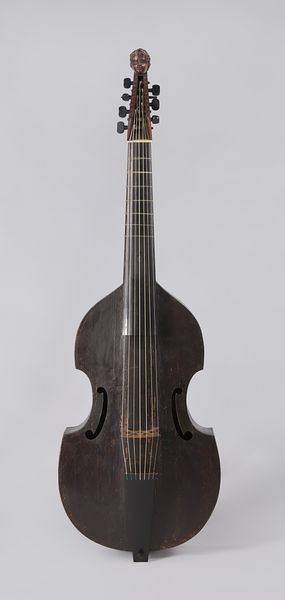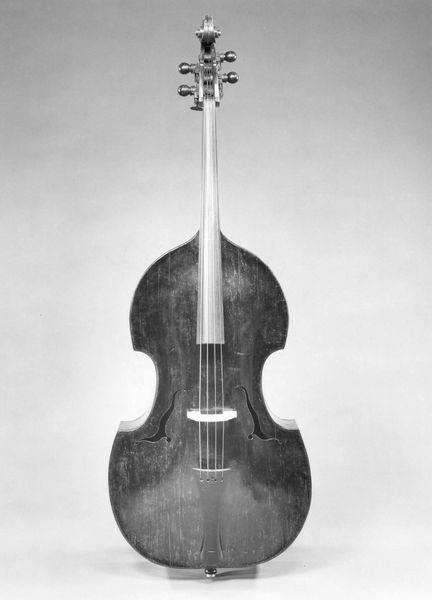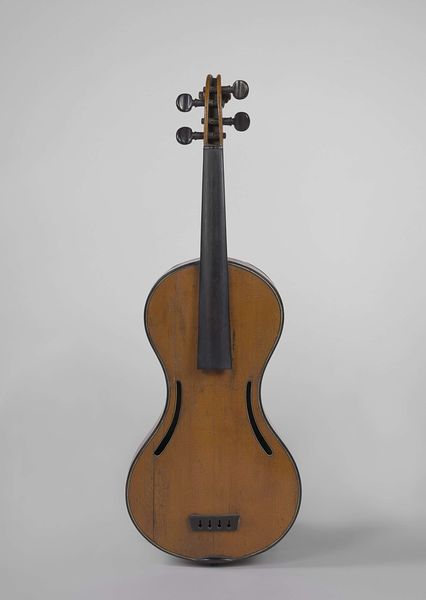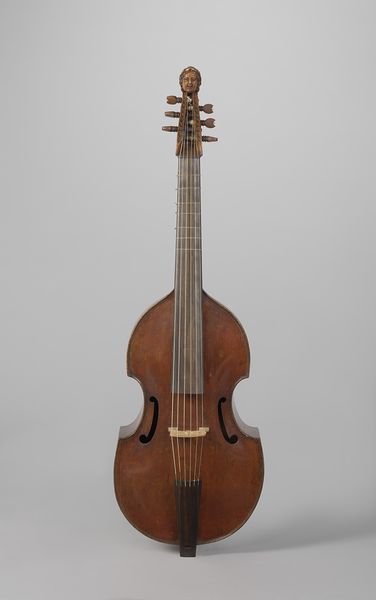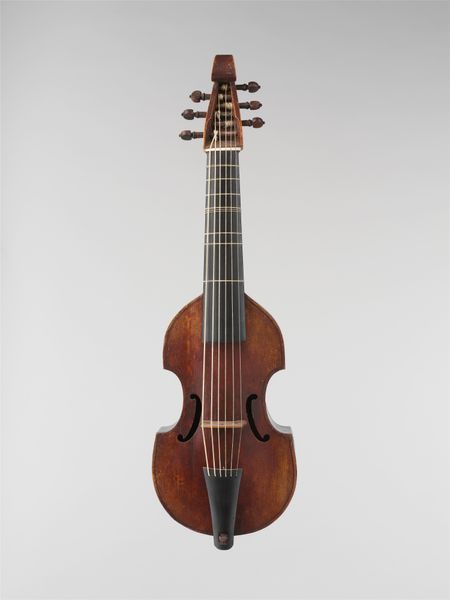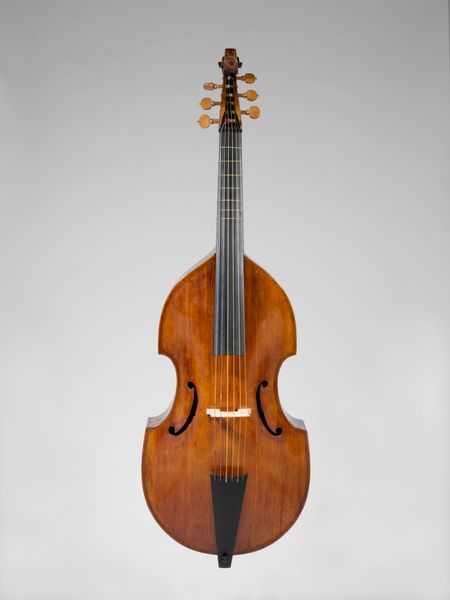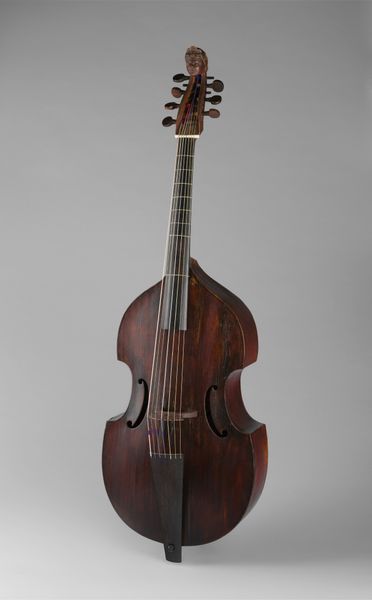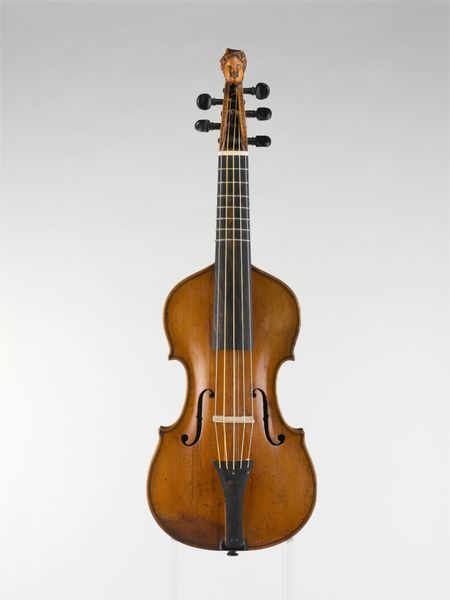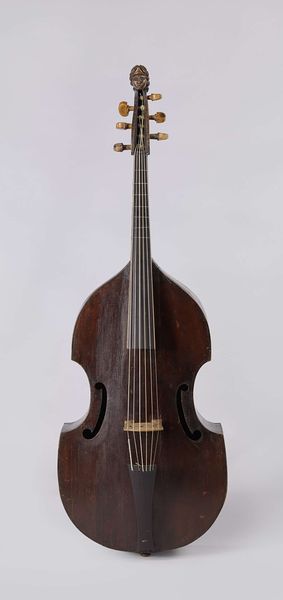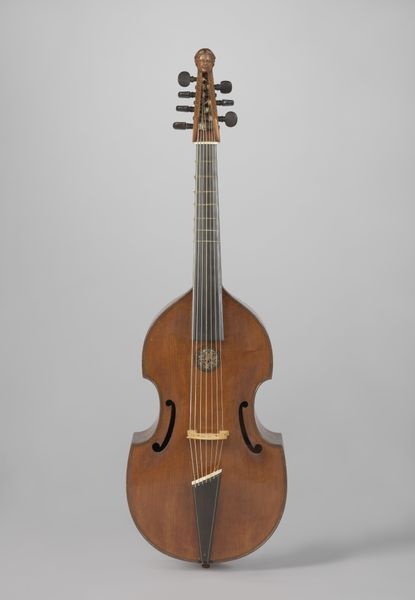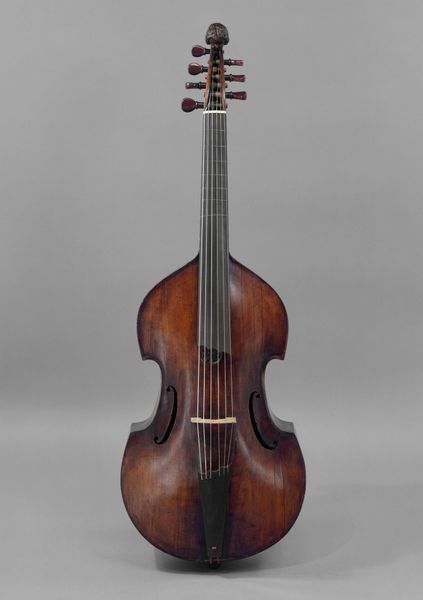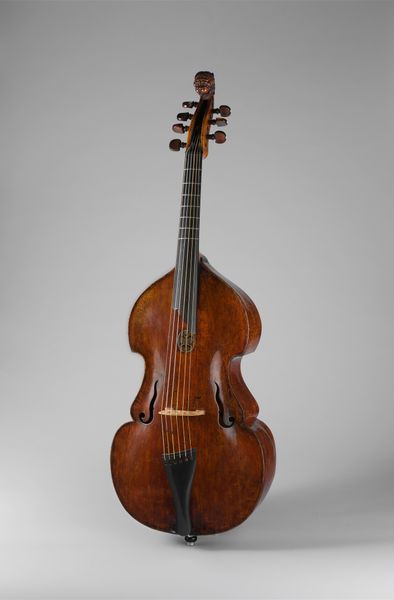
drawing, ink
#
pencil drawn
#
drawing
#
baroque
#
pencil sketch
#
ink
#
pencil drawing
#
musical-instrument
Dimensions: Body Length 65 cm
Copyright: Public Domain
Editor: This is "Division Viol" from 1629, made by Henry Smith. Looking at this drawing, rendered in ink and pencil, of what seems to be the back of the instrument. The material grain of the wood and the linear patterns seem so intentionally crafted... how do you read into this? Curator: This drawing gives us a glimpse into 17th-century instrument making, its inherent labour, and also its reliance on material acquisition and processing. What do you observe about the geometric design at the base? Editor: The interconnected lines? It almost looks like an elaborate knot or perhaps even a brand or marker... what might that signify? Curator: Exactly. That 'knot', seemingly innocuous, reveals the craftsperson’s intimate manipulation of materials; likely created using specialized tools. Consider what these specialized processes required during the baroque era—guild systems and apprentice training, where skills were meticulously transmitted. Are we really just looking at the aesthetic dimensions of art here, or do you see how art objects reflect, transmit, and shape economic and labor practices? Editor: So, you’re suggesting the design itself, beyond its visual appeal, embodies the socio-economic structure surrounding its creation? Curator: Precisely. The 'Division Viol', through this detailed sketch, asks us to consider not just "art" but *how* art came into being through these means of production. What labor conditions were involved? Who had access to these instruments, and what statement did owning this artwork represent in its era? Editor: Wow. So, by focusing on the material reality, the artist's actions, and economic structures, this ordinary looking drawing suddenly reveals a much larger world of craftmanship during the 17th century! Thanks, I will definitely look at things differently now! Curator: My pleasure. It is all about examining how artists utilize materiality within society and history.
Comments
No comments
Be the first to comment and join the conversation on the ultimate creative platform.
